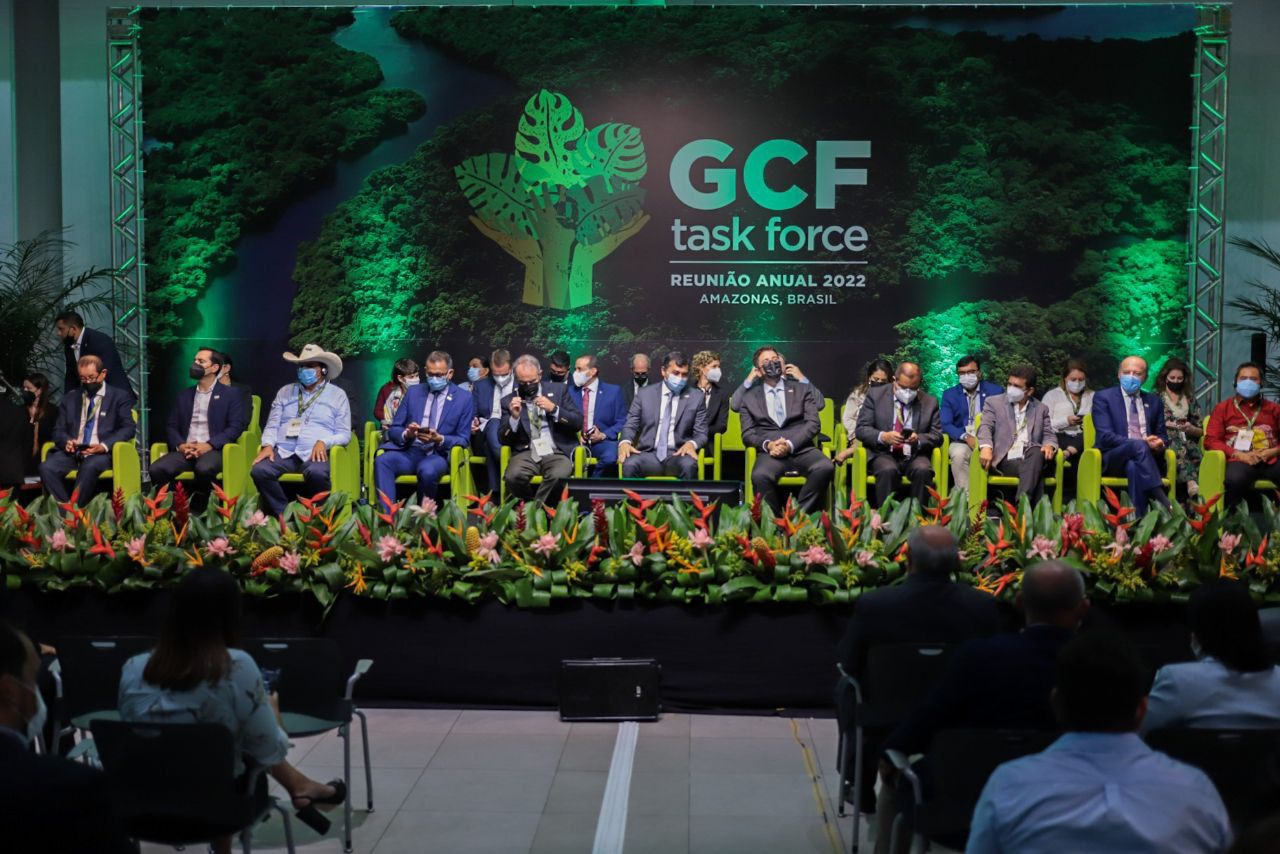After the morning, marked by the official opening of the 12th Meeting of the Governors’ Climate & Forests Task Force (GCF Task Force), this Thursday (03/17), the afternoon gave way to the discussion of the first thematic tracks that align with the Manaus Action Plan (MAP).
The first theme discussed was “People and Communities”, moderated by Colleen Scanlan Lyons, Project Leader of the GCF Task Force. Speakers included Oseas Barbarán Sanchez, president of the Confederación de Nacionalidades Amazónicas (Conap); Juan Carlos Jintiach, from the Coordinator of Indigenous Organizations of the Amazon Basin (Coica); Gustavo Sanches, from the Alianza Mezoamericana de Puebos y Bosques (AMPB); Ricardo Queiroz, from the Public Defender’s Office of the State of Amazonas (DPE-AM); Fany Kuiru, from the Confederación de Nacionalidades Amazónicas (Conap); and Shannon Dilley, from the California Air Resources Board.
For Colleen Scanlan Lyons, starting the discussions with “People and Communities” was not by chance. According to her, this is one of the most important pillars of the Manaus Action Plan (MAP).
TECHNOLOGY, INNOVATION, AND RESEARCH
The afternoon continued with the second thematic track: Innovative Technology and Research for Conservation and Development, with a special focus on bioeconomy.
The role of the university in the economic and innovative development of the Amazon was one of the themes of the debate. To begin with, the rector of the Amazonas State University (UEA), Cleinaldo Costa, presented the projects under development, pointing out the advances in the integration of indigenous people to the educational institution.
Another important participation was by Bruce Nelson, senior researcher at the National Institute for Amazon Research (INPA), who pointed out that bioeconomics is also about understanding how the forest can react to the increase in temperature. “From 1980 to 1998, there was not a day when the forest went above 38°. However, from 1998 to the present day, this happened in six years. This is due to the increase in CO2,” he said.
Bruce explained that another phenomenon that has been repeating itself is the occurrence of the extremes of drought and rain. “There is a need to understand the importance of forest degradation, not just deforestation,” he argued.
Among the speakers was also the Secretary of Environment of Pará, Mauro O’ Almeida, who emphasized that one of the axes of the State is the bio-economy. For the secretary, this is a practice that has been used for centuries by indigenous peoples.
Another guest invited to participate in the meeting was the Secretary of Science, Technology and Innovation (SECTI) of the city of Tefé, in the state of Amazonas, Daniel Sacha, who explained the importance of investing in youth, as well as focusing on social issues. “If we don’t solve the poverty and hunger issue, we will lose the environmental agenda,” highlighted the secretary.
The meeting also included private institutions, such as Coca Cola, and research and data collection centers, with themes of innovation and potential to transform economic realities. The meeting also included open question rounds to the audience and audiovisual presentations highlighting the forest.

